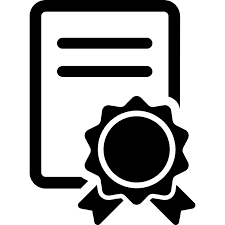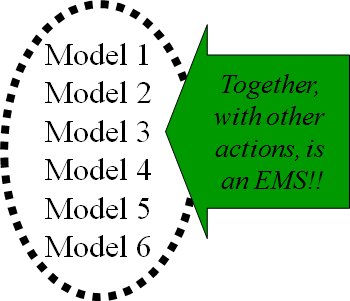
| . |
7+1 Models of Urban EMSs:
Bringing it all Together
|
|
| . |
 |
Hari Srinivas |
|
Case Study Series E-168. September 2021
|
ISO 14001 defines the setting up of a continual and voluntary environmental management system (EMS). Used in conjunction with appropriate goals, and with management commitment, the standards help improve environmental performance and reduce negative impacts. They provide an objective basis for verifying claims about an organization, for example - in this case - a local government's environmental performance in its day-to-day operations.
Consumers, governments and companies up and down the supply and production chain are all seeking ways to reduce their environmental impact and increase their long-run sustainability and profitability. For local governments, the key goals are to be environmentally efficient, and serve as a model for resource-saving and replication.
More and more cities are taking up this initiative of developing and implementing an EMS - either within the framework of ISO 14001, or outside it. We can see seven models of urban EMSs plus the real model!
| Model 1 |

Model 1: Single Action
The local government takes only one action, or a couple of actions, such as electricity/water saving or paper recycling using the Reduce, Reuse, Recycleapproach.
| Examples |
| Very Common. Many cities in Australia, Europe and USA have implemented such actions
|
|
| Model 2 |

Model 2: ISO 14001 Certification
The local government obtains ISO 14001 certification, but usually for the city office buildings only, involving some or all departments of the local government.
| Examples |
| More than 200 local governments in Japan have obtained ISO 14001 Certification |
|
| Model 3 |

Model 3: Utilities Certification
Each utility office (for example, utility agencies related to the supply of water, electricity, gas, transportation etc.) obtains ISO 14001 certification separately, and usually there is no link to local government or between utilities.
| Examples |
| York, Canada and Honolulu, USA
|
|
| Model 4 |

Model 4: Green Procurement and EMA
Local governments being the largest 'consumer' in a city - insist that developers and builders who work with them on urban infrastructure projects, or suppliers of materials have obtained ISO 14001 certification in order to qualify to participate in tendering. Local governments have also used environmental management accounting to verify and evaluate the environmental impact of their activities and projects.
| Examples |
| Scotsdale, USA; Frankfurt, Germany; Heidelburg, Germany
|
|
| Model 5 |

Model 5: Work with Civil Society
Local governments work with groups such as residents, children, youth, women etc. to implement 'green action'through an EMS. An EMS applied at the level of a household, or involvement of children in a 'Kids EMS' are common.
| Examples |
| Minamata, Sendai and Tokyo in Japan
|
|
| Model 6 |

* SDGs = Sustainable Development Strategies
Model 6: Link and Implement Environmental Initiatives
EMS is frequently linked to, and used as an implementation strategy, for other environmental initiatives such as Local SDGs strategies.
| Examples |
| Hailton-Wentworth, Canada and Huddersfield, UK
|
|
| Model 7 |

Model 7: Self-declare an EMS
Many local governments and other public entities are taking the step to 'self-declare' the EMS that they have implemented, without going through the ISO certification process.
| Examples |
| Many cities have adopted this model in Japan (in order to avoid the costs involved in the ISO certification processes) |
|
| Model X |

Model X: The full EMS
Considering the complexity of urban environments and their management processes, a realEEMS is in fact, a combination of all the seven models, plus other actions and procedures that are a necessary part of ISO 14001.
| Examples |
| Manningham, Australia, Seattle, USA, and Penang and Kuching,Malaysia
|
|
|
|